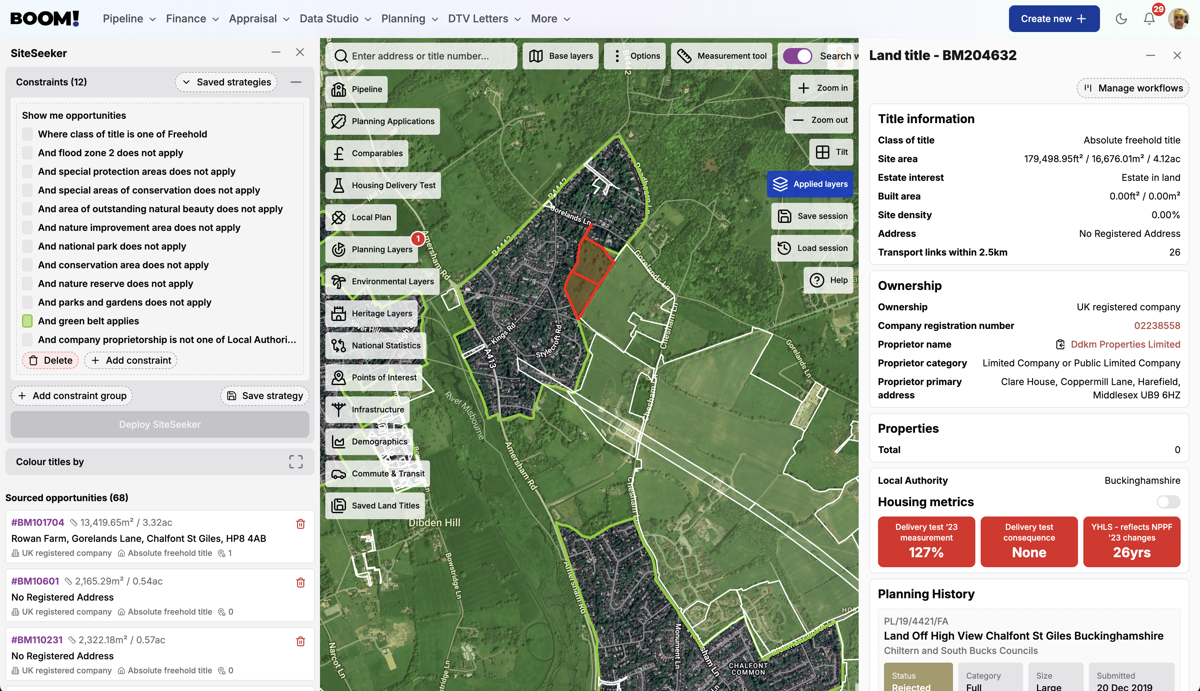Grey Belt Land: A Developer’s Guide







With Green Belt planning permission becoming increasingly challenging, Labour's proposal to develop the 'Grey Belt' could be key to achieving UK housing targets.
Defining the Grey Belt
The term 'Grey Belt' gained prominence with the Labour Party in April 2024 and was incorporated into the NPPF in December 2024. It designates Green Belt land that is either previously developed or doesn't significantly contribute to the core purposes of Green Belt designation.
The official definition states that Grey Belt land comprises
"previously developed land and/or any other land that, in either case, does not strongly contribute to any of purposes (a), (b), or (d) in paragraph 143" of the NPPF for planning and decision-making.”
Relevant Green Belt Purposes (NPPF Paragraph 143)
The pertinent Green Belt purposes are to:
Check the unrestricted expansion of large built-up areas;
Prevent the merging of adjacent towns;
Preserve the character and setting of historic towns.
Consequently, land must now strongly serve one of these three purposes to avoid Grey Belt classification, potentially making it available for development.
Implications of the Grey Belt Definition
The current definition, focusing on a strong contribution to specific Green Belt purposes, is less stringent than earlier drafts. Land will likely be designated as Grey Belt unless a compelling reason exists to restrict development.
February 2025 PPG Update: Impact on Grey Belt Land and Development
Recent updates to the Planning Practice Guidance (PPG) in February 2025 have significant implications:
Smaller Parcel Assessment: Local authorities are now required to assess Green Belt land in smaller, individual parcels to better identify areas suitable for development without compromising the broader Green Belt;
Village Exclusion: Villages are explicitly excluded from the definition of 'large built-up areas'. This means land near villages may now be considered for Grey Belt designation more readily;
New Development Criteria (2025): Development on Grey Belt land is permissible if it meets the following key criteria:
Does not weaken the wider Green Belt;
Is in a sustainable location;
Addresses a demonstrable need, such as housing;
For major housing schemes, provides 15% more affordable housing than typically required (up to a maximum of 50%).
Streamlined Planning Decisions: The government anticipates that these clearer guidelines will expedite local planning decisions, reduce lengthy appeals, and facilitate more effective planning, especially in areas facing housing pressures.
Extent of Grey Belt Land in England: 2025 Data
The revised PPG framework has made it easier to identify potential Grey Belt land. Our initial analysis indicates over 80,000 potential sites across England. Notably, in the Green Belt surrounding London, over 10,000 potential Grey Belt sites have been identified, representing a significant opportunity for development.
Identifying Grey Belt Land
To identify potential Grey Belt sites, look for:
Previously developed land (e.g., former industrial sites, depots);
Sites located close to existing settlements;
Land not subject to environmental protection (e.g., outside National Parks, AONBs, SSSIs);
Land where development would not lead to the merging of settlements.
BOOM!’s SiteSeeker includes a Grey Belt strategy which can be easily refined by the inclusion of further constraint classes such as brownfield and primary and secondary land use classification to source Grey Belt land across England.
The Potential of Grey Belt for New Housing
While the Grey Belt offers new possibilities, it is not a singular solution. Like brownfield development, it should form part of a comprehensive land supply strategy that includes urban regeneration, strategic land allocations, and sustainable urban extensions.
Nevertheless, the Grey Belt signifies a substantial change in planning approaches for constrained areas. Notable Grey Belt development approvals include:
Hertfordshire: Europe’s largest AI data centre was approved on grey belt land;
Surrey: A mixed-use commercial, recycling, and residential development gained approval on a former waste processing site;
St Albans: A 550-home scheme in Harpenden was approved.